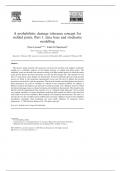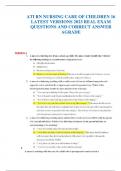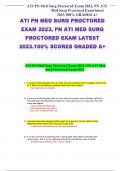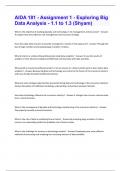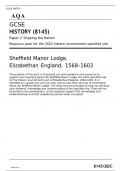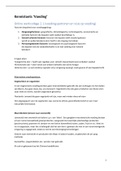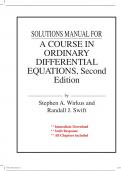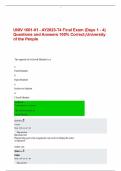Tentamen (uitwerkingen)
A probabilistic damage tolerance concept for welded joints. Part 1: data base and stochastic modelling
- Vak
- Instelling
Fatigue durability and inspection planning have long been important issues in the design and scheduled inspection of welded offshore structures. For welded structures subjected to cyclic repetitive loading, the admissible stresses in the vicinity of welded joints are relatively low due to the jo...
[Meer zien]
